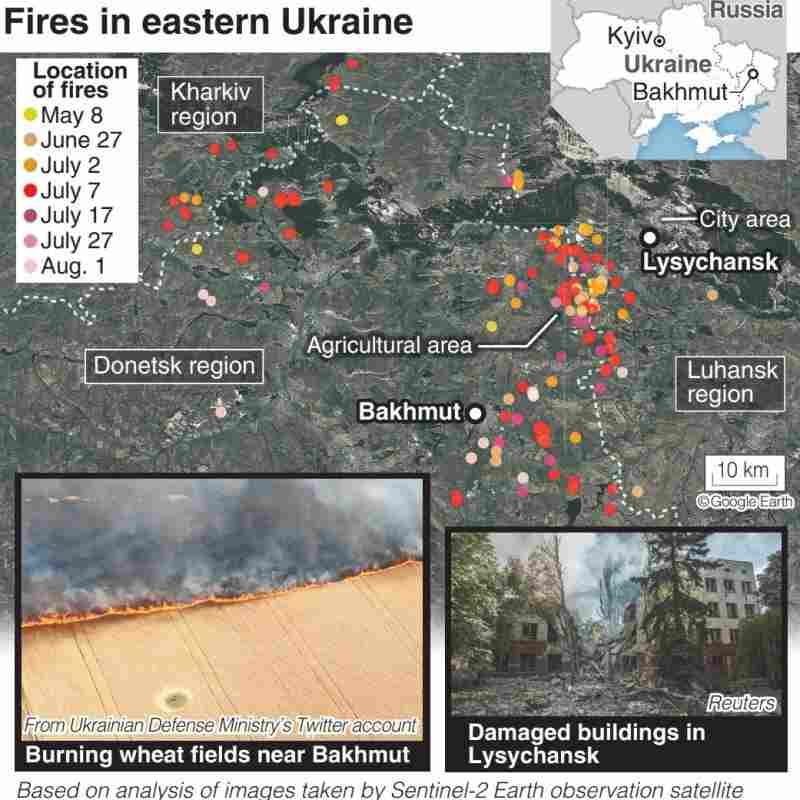Ukrainian cropland suffers numerous fires amid Russian attacks

17:19 JST, September 26, 2022
There were numerous fires on agricultural land in eastern Ukraine in early July, when the region was under intensive military attack by Russia, according to an analysis of satellite images by The Yomiuri Shimbun and outside experts.
At most, more than 100 fires broke out in a single day in the region, the analysis found. In one case, the burned land totaled 45 hectares.
“The fires were likely caused by the conflict with Russian forces. They are dealing a significant blow to Ukrainian agriculture,” a military expert said.
Yomiuri staff, together with space journalist Ayano Akiyama, analyzed images taken by the European Space Agency’s Sentinel-2 Earth observation satellite between May and early August. The analysis examined about 10,000 square kilometers straddling the Donetsk and Luhansk regions in the east of Ukraine.
Fires were first identified from the infrared data of the images, and the EU’s land use statistics were then utilized to determine whether the fires were on farmland.
According to the analysis, there was a sharp increase in fires between late June and early July in farmland on the outskirts of Lysychansk, a city next to Sievierodonetsk, a key strategic point in the Luhansk region. There was also a dramatic rise in Bakhmut, which serves as a supply hub for the military in the Donetsk region.
Fires broke out at 16 sites on June 27, at 30 sites on July 2 and at 102 sites on July 7. The number of fires decreased afterward.
Some of the blazes may have been caused by open burning. However, according to the Institute for the Study of War, a U.S. policy research institute, Russian forces intensified military operations in Bakhmut after taking the Luhansk region in early July. Subsequently, the Russians were reported to have moved some of their troops to the south, which coincides with the analysis results.
In Ukraine, fields stretch over flat land around cities, according to Yu Koizumi, a lecturer at the University of Tokyo who specializes in Russian military strategy.
“Russian forces shelled Ukrainian garrisons that were deployed extensively around farmland, probably sparking fires in many areas on cropland,” Koizumi said.
Koizumi was concerned over toxic heavy metals contained in shells and other materials, saying, “It could take a long time to clean up soil contamination.”
Dubbed the breadbasket of Europe, Ukraine is known for its fertile land. In early July, Ukraine’s Defense Ministry posted on Twitter a photo of burning wheat fields near Bakhmut. “It is not Ukrainian wheat that is on fire, it is the food security of the world that is on fire,” the ministry said.
Russian troops may have deliberately targeted Ukrainian fields in an attempt to undermine the country’s economy, an official of Ukraine’s Agrarian Policy and Food Ministry said during an interview with The Yomiuri Shimbun.
Since Russia’s invasion, about 690,000 hectares of farmland across Ukraine have suffered fires — an area roughly the size of Shimane Prefecture.
The food ministry official stressed that wheat fields were dry in July and August, and even small fires could easily spread, posing the greatest threat in a warzone.



